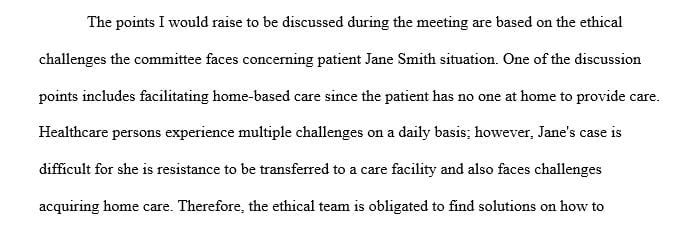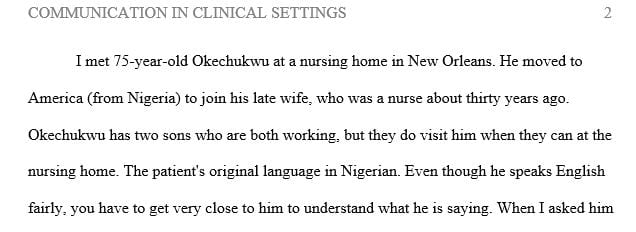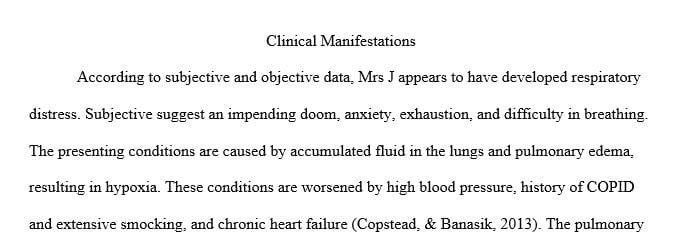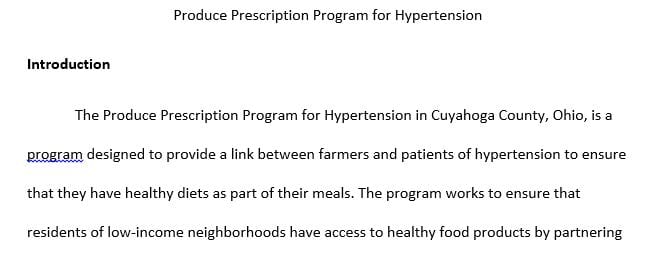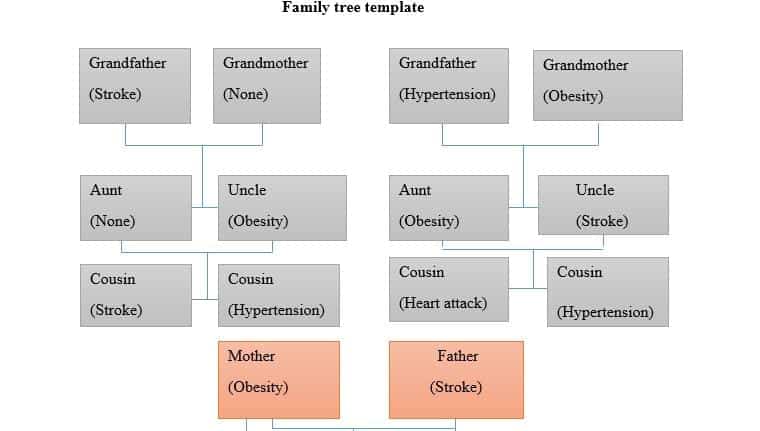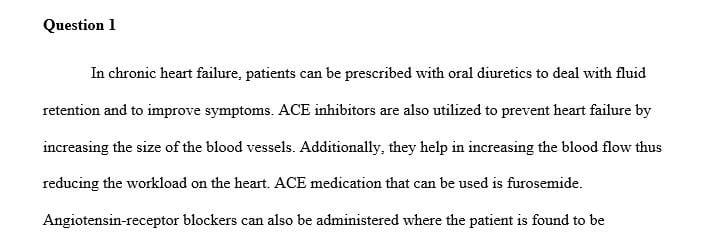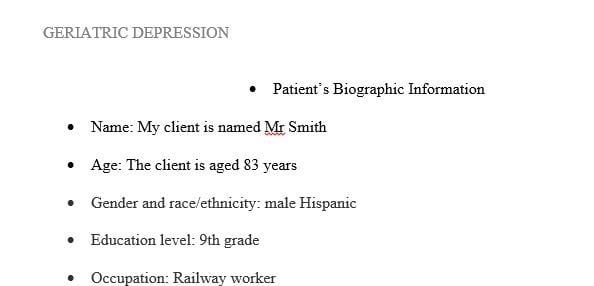Discuss goals for this disease presented in Healthy People 2020.
1. The older diabetic patient discussed in week two project had the following preliminary issues: hypertension, arthritis, and visual impairments. His wellness program hence will provide supervised exercises, patient and family education and support throughout his journey, while also implementing lifestyle changes. The community center was well suited for supervised physical exercises. Supervised physical exercises are effective measures to improve muscle metabolism, and maintain strength (Seene, & Kaasik, 2012). Additionally, exercises have been reported to increase insulin sensitivity and aid in the achievement of improved glycemic control. Other benefits include better weight management, reduced blood pressure, and the risk of cardiovascular disease. Even though exercises are encouraged, the patient will be advised to discontinue boxing and change to non-impact sports due to the ongoing treatment for arthritis.
The patient will be taught about the total cessation of alcohol intake that will help prevent hypoglycemic events. Avoidance of the barbecue and the integration or fresh fruits and vegetables will help achieve good lipid profiles (Khazrai, Defeudis, & Pozzilli, 2014). Since the patient takes multiple medications, the patient and his family will be taught on the importance of keeping a drug schedule, and having well-labeled, color-coded areas for keeping different drugs that will assist in minimizing mixing up of medications and the risk of overdose. Due to visual impairments, the patient’s family will be taught on the importance of increased lighting in the interior areas of the house and the introduction of walking rails. Orthopedic shoes for walking around to prevent the development of backache, and ease tension on the knees will be highly recommended. For emotional support, a close family relationship with his family will be highly encouraged. Since the patient was Hindu, he will be highly encouraged to engage in worshiping together with his family in the community temple. Close family relationships and religious worship will improve emotional health and spiritual growth (Choi, & Hastings, 2018).
The above approach takes into account the physical health, emotional and spiritual health, patient and family education, home safety, community participation, and improved self-care. A holistic approach will not only improve the overall health of the patient but also assist him in attaining confidence in self-management, improved emotional wellbeing, and spiritual growth. This above provides an optimum level of well-being.
References
Seene, T., & Kaasik, P. (2012). Muscle weakness in the elderly: Role of sarcopenia, dynapenia, and possibilities for rehabilitation. European Review of Aging and Physical Activity, 9(2), 109-117. doi:10.1007/s11556-012-0102-8
Choi, S. A., & Hastings, J. F. (2018). Religion, spirituality, coping, and resilience among African Americans with diabetes. Journal of Religion & Spirituality in Social Work: Social Thought, 38(1), 93-114. doi:10.1080/15426432.2018.1524735
Khazrai, Y. M., Defeudis, G., & Pozzilli, P. (2014). Effect of diet on type 2 diabetes mellitus: A review. Diabetes/Metabolism Research and Reviews, 30(S1), 24-33. doi:10.1002/dmrr.2515
2 My subject for the week 2 project was D.K. a 65-year-old female with minimal health conditions. She reported mild hypertension and hyperlipidemia, and chronic neck and back pain due to an MVA in 2001 which required surgical replacement of cervical vertebrae using bone from her hip (D.K., personal communication, August 18, 2020). She voiced interest in attending a gym and increasing exercise. From the questionnaire and assessment, I performed for the project, I discovered the need for D.K. to[AJ1] participate in a consistent exercise program that includes both cardio and weight-bearing exercise. Exercise offers multiple benefits for the older adult such as decreasing the risks of cardiovascular disease, hypertension, diabetes, obesity, and some types of cancers (“Promoting Wellness in Older Patients”, 2017). Chronic back pain can lead to decreased activity and deconditioning of back muscles which can lead to increased back pain (Sturos, n.d.). Weight training can improve back health and pain by improving the function and strength of muscles in the back and core, increasing lean muscle mass and decreasing body fat, and increasing the ROM of the spine (Sturos, n.d.).
My recommendation for her would be to enroll in MCA Health & Fitness Center which is a local wellness center that is run and owned by a cardiology group. They developed this center to provide patients and non-patients with convenient access to a program that is customized to fit their individual needs (“Providers”, n.d.). The exercise plan is customized with a review of medical conditions/ histories, as well as oxygen, blood pressure, and heart rate monitoring (“Providers”, n.d.). The staff there are well trained in kinesiology, exercise physiology, and exercise and fitness management (“Providers”, n.d.). D.K. would receive a program tailored to her physical abilities and limitations with monitoring and education regarding how to perform the exercises safely and effectively. This would not only help improve D.K.’s back health but her overall health as well as it can improve her HTN and cholesterol and lower her risks for other chronic diseases. Exercise is a great way to relieve stress and improve mental health. According to an article by Edith (2014), exercise is a holistic approach to achieve “outstanding health” as it not only reduces risks for disease and boosts metabolism, it also improves mental health. She goes on to state, “It has been demonstrated to improve mood, slow the cognitive decline associated with aging, reduce dementia risks, improve sleep, reduce stress and increase self-confidence” (Edith, 2014).
References:
Edith, J. (2014, January 07). 4 Reasons Why Exercise Is Holistic Medicine. Retrieved from https://www.onegreenplanet.org/lifestyle/4-reasons…
Promoting Wellness in Older Patients. (2017). Retrieved from https://www.nia.nih.gov/health/promoting-wellness-…
Providers. (n.d.). Retrieved from http://montgomerycardiovascular.com/fitness-center/
Sturos, E. (n.d.). Weight Training Effectively Relieves Back Pain. Retrieved from https://www.spine-health.com/blog/weight-training-effectively-relieves-back-pain
3 What is the most important factor that causes caregiver role strain?
Family caregivers are very important in supporting, promoting and maintaining the health of the people they are responsible for that are suffering from a chronic disease. They are responsible to perform activities of daily living that the sick person is not able to do. As a result, the caregiver can experience some negative effects called caregiver role strain. In my opinion, the most important factor that causes caregiver role strain is the severity of the illness. For example, in the case of a wife that is caring for her husband with prostate cancer, she has to spend a lot of time with him and she must also go to work, care for the children.
- How do you assess for caregiver strain?
The quality of life of caregivers usually tends to deteriorate in physical, psychological and social aspects. Honea et al. (2008) said that caregiver role strain can be measured objectively or subjectively. An objective measurement of caregiver burden can be for instance the number of tasks the caregiver performs on behalf of the patient (Bookwala & Schulz, 2000; Gaugler et al., 2005). Several tools are proposed to effectively assess for caregiver strain. The Memorial Symptom Assessment Scale measures the burden related to frequency, severity, and distress of the patient’s symptoms. It is rated from 1 to 4: 1(rarely, slightly severe, no distress at all) to 4 (almost constantly, very severe, very much distress) (Honea et al., 2008).
- What can be done to prevent or decrease caregiver role strain?
Research has proven that certain interventions are likely to be effective in lessening caregiver role strain. Psycho-educational interventions such as teaching problem-solving skills, include patient symptom assessment and management, teaching coping skills. Psychotherapy interventions such as teaching caregivers to monitor their own feelings, helping them challenge negative thoughts that may create issues for them and helping caregivers engage in pleasant activities and positive experiences (Honea et al., 2008).
Reference
Honea NJ, Brintnall R, Given B, Sherwood P, Colao DB, Somers SC, & Northouse LL. (2008). Putting evidence into practice®: nursing assessment and interventions to reduce family caregiver strain and burden. Clinical Journal of Oncology Nursing, 12(3), 507–516. https://doi-org.su.idm.oclc.org/10.1188/08.CJON.507-516
Rueda Diaz, L. J., de Almeida Lopes Monteiro da Cruz, D., & de Cassia Gengo E Silva, R. (2016). Caregiver role strain: bi-national study of content validation. Investigacion y Educacion En Enfermeria, 34(2), 280–287. https://doi-org.su.idm.oclc.org/10.17533/udea.iee.v34n2a07
4. Choose one disease process and discuss the disease process.
Chronic obstructive pulmonary disease (COPD) is an umbrella term used to described respiratory disease characterized by airway obstruction. COPD is a complex mix of signs and symptoms in patients with chronic bronchitis and emphysema with cigarette smoking being an important risk factor. Other factors, such as exposure to indoor and outdoor air pollution, occupational hazards, and infections, can cause COPD (Mannino and Buist, 2007). Although, smoking is the leading cause of COPD, however, not all smokers acquire COPD, and COPD can develop in nonsmokers as well. Sign and symptoms of COPD consist of Cough, SOB especially with physical activity, wheezing, and chest tightness.
COPD is the third leading cause of death by disease in the United State (Burt and Corbridge, 2013). More than 16.4 million people have been diagnosed with COPD, and there are millions of people who have the disease and may not know it. COPD causes serious long-term disability and early death. At this time there is no cure, but with the proper medication and support management, COPD is manageable (American Lung Association, 2020).
Discuss the goals for this disease presented in Healthy People 2020.
According to the healthy people 2020, the goals for COPD include;
Reduce activity limitations among adults with chronic obstructive pulmonary disease (COPD)
Reduce deaths from chronic obstructive pulmonary disease (COPD) among adults
Reduce hospitalizations for chronic obstructive pulmonary disease (COPD)
Reduce emergency department (ED) visits for chronic obstructive pulmonary disease (COPD)
How does the CDC play a role in meeting the goals?
CDC works hard to lower the prevalence of COPD rates by offering smoking and tabacco cessation. They have campaigns that educated the nation on the benefits of quitting. They offer free quit coaching, quit plan, educational materials, and referrals to local resources to those who needs it (CDC, 2020).
Reference
American Lung Association (2020). Retrieved from https://www.lung.org/lung-health-diseases/lung-disease-lookup/copd/learn-about-copd
Healthy People 2020 (2020). Retrieved fromhttps://www.healthypeople.gov/2020/topics-objectives/topic/respiratory-diseases/objectives
Center for Disease Control and Prevention (2020). Retrieved from https://www.cdc.gov/tobacco/quit_smoking/index.htm?s_cid=osh-stu-home-nav-002
Burt, L., & Corbridge, S. (2013). COPD exacerbations. AJN The American Journal of Nursing, 113(2), 34-43.Pierson, D. J. (2000). Pathophysiology and clinical effects of chronic hypoxia. Respiratory care, 45(1), 39-51.
Mannino, D. M., & Buist, A. S. (2007). Global burden of COPD: risk factors, prevalence, and future trends. The Lancet, 370(9589), 765-773.
5. Thank you for discussing the various stages of Alzheimer’s disease. This is important information to know. In regards to the behavioral therapeutic strategies that can help with the treatment of Alzheimer’s, you had stated “The therapeutic techniques involve physical activities and music therapy which are used as viable and useful treatments”. How are physical activities and music therapy specifically beneficial?



